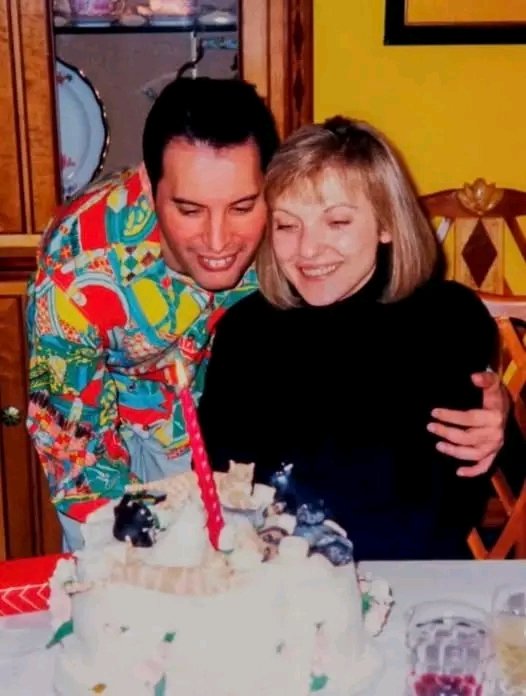“Until My Last Breath: The Eternal Bond Between Freddie Mercury and Mary Austin—From Romance to a Love That Transcended Labels, Time, and Tragedy”
In the glamorous chaos of rock and roll, love stories rarely survive the glare of the spotlight. But the bond between Freddie Mercury and Mary Austin defied that rule—growing not in defiance of truth, but in deep, enduring acceptance of it. Their relationship began with humble roots in early 1970s London, blossomed into romance, and ultimately transformed into something far rarer: an unbreakable connection that neither fame, nor sexuality, nor even death could sever.
Mary was a quiet, working-class woman, thoughtful and grounded. Freddie was the bold, aspiring frontman of a band on the verge of greatness. They met while working side by side at Kensington Market—Freddie alongside drummer Roger Taylor selling vintage clothes, and Mary nearby, quietly taking in his charisma. Their attraction wasn’t instant fireworks but a slow, steady build of trust, comfort, and genuine affection. “It took me three years to fall in love with him,” Mary later admitted, “but when I did, I had never felt like that before.” They began living together in a tiny rented flat on Victoria Road, where their only curtain hung in the bedroom because it was all they could afford.
As Queen’s fame soared, so did Freddie’s transformation. He became a superstar, yet Mary remained his constant—an anchor amid the madness of stardom. She supported him behind the scenes, posing for photographs for the band’s first album and attending his early shows. Still, with fame came change, and Mary began to feel the distance grow. She sensed something unspoken—until one evening in 1976, Freddie finally voiced it.
“Mary, I think I’m bisexual,” he confessed.
“No, Freddie… you’re gay,” she replied with quiet clarity.
That moment marked the end of their romantic relationship, but not their love. Far from it. Mary moved out the next day, but she never moved out of Freddie’s heart. The love that had once been romantic evolved into a deeper, more profound soul-bond. “To me, it was a marriage,” Freddie would later say. “All my lovers asked why they couldn’t replace Mary, but it’s impossible.”
Their connection remained unshakable. She was the first to know when he received his HIV diagnosis, and she stayed by his side until his final breath. In his most vulnerable moments, it was Mary he trusted. “One day, he decided enough was enough,” she recalled. “He looked death in the face and said, ‘Okay, I’ll take it.’” And she never left him—not then, not now.
When Freddie died in November 1991, it was Mary who scattered his ashes in a secret location, a promise she has kept from the world ever since. He left her half of his estate, including the cherished Garden Lodge mansion, and entrusted her with his memory. She became his legacy’s quiet guardian.
Mary Austin wasn’t just Freddie Mercury’s former partner. She was his safe haven, his truth, his chosen family. In a life that was larger than life, she was his still point—the one person he could always return to. “I’ll love her until I draw my last breath,” Freddie once said. And in every meaningful way, he did.
